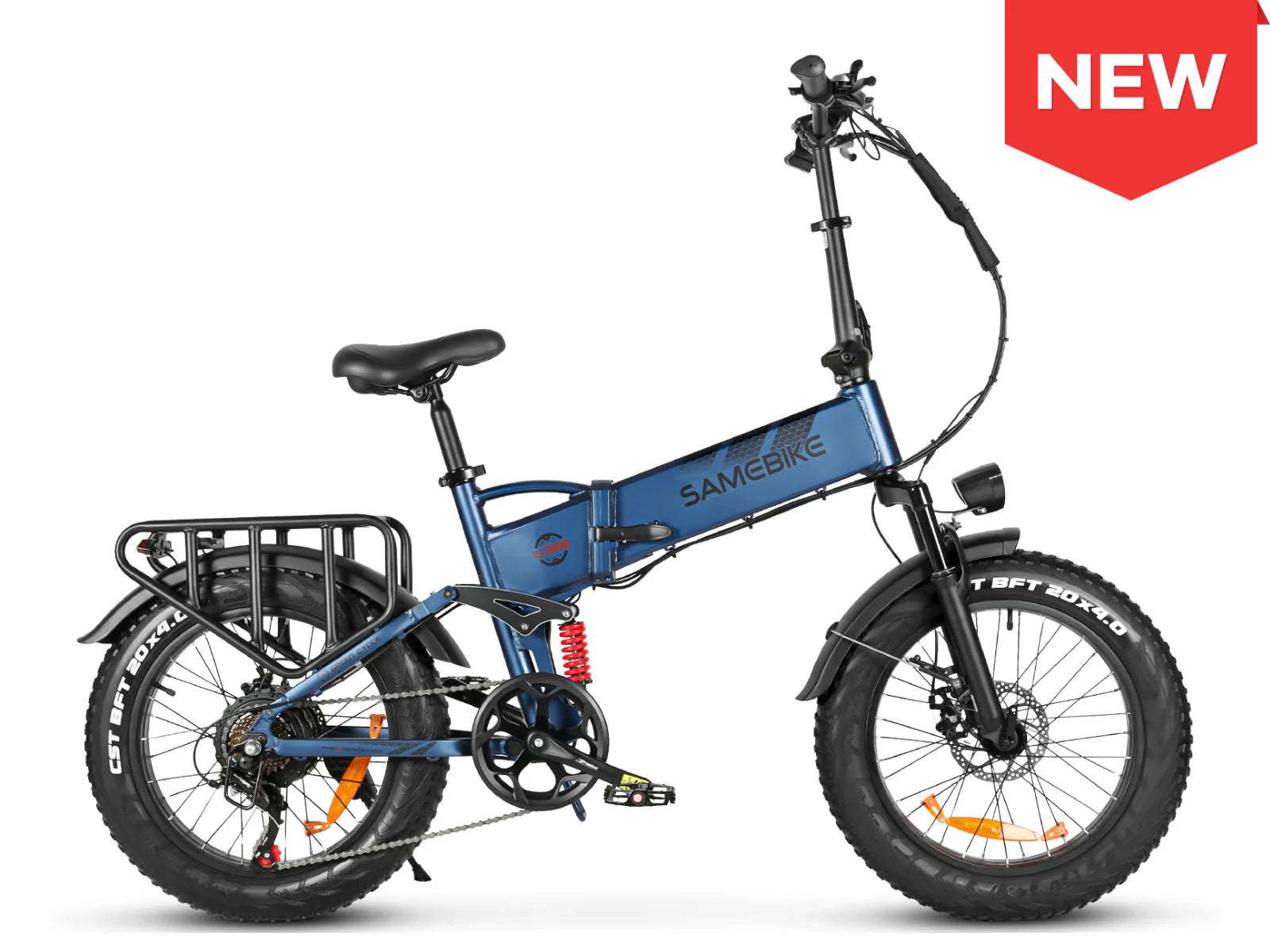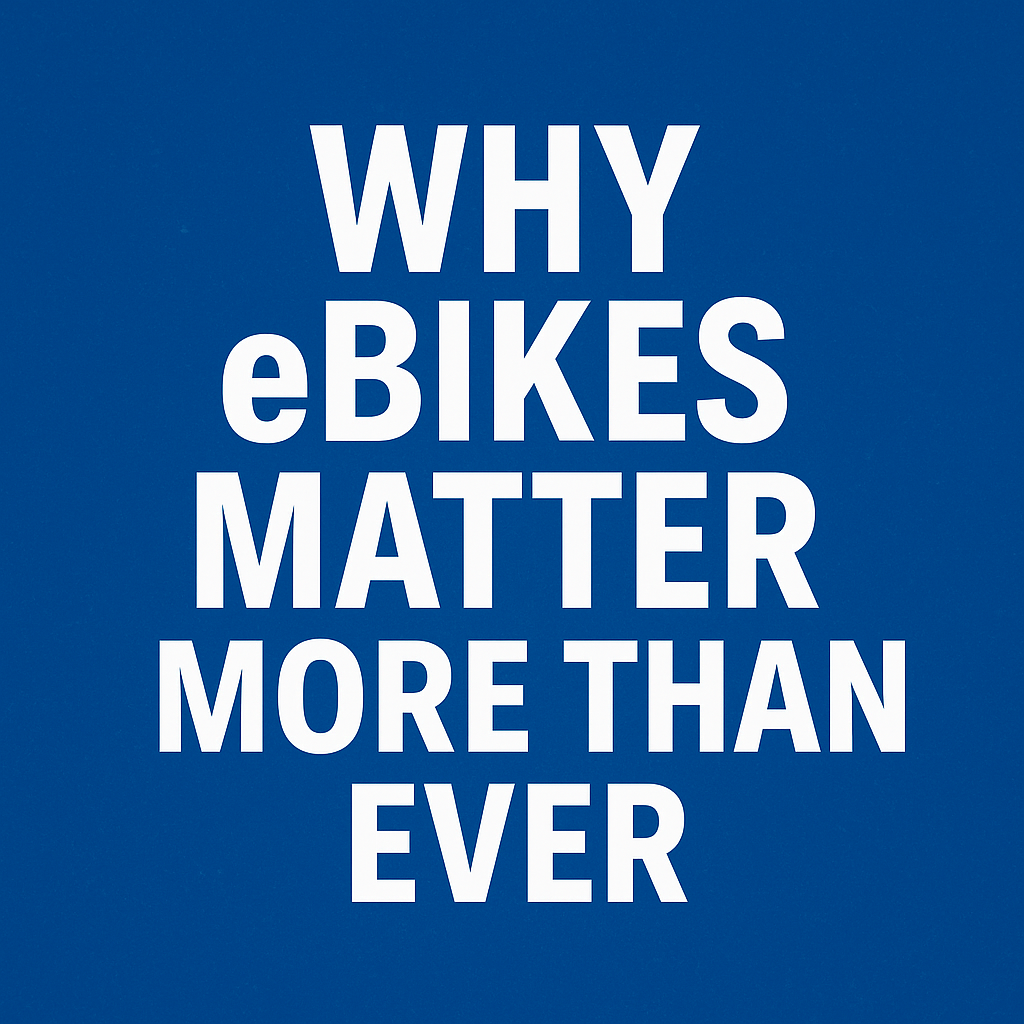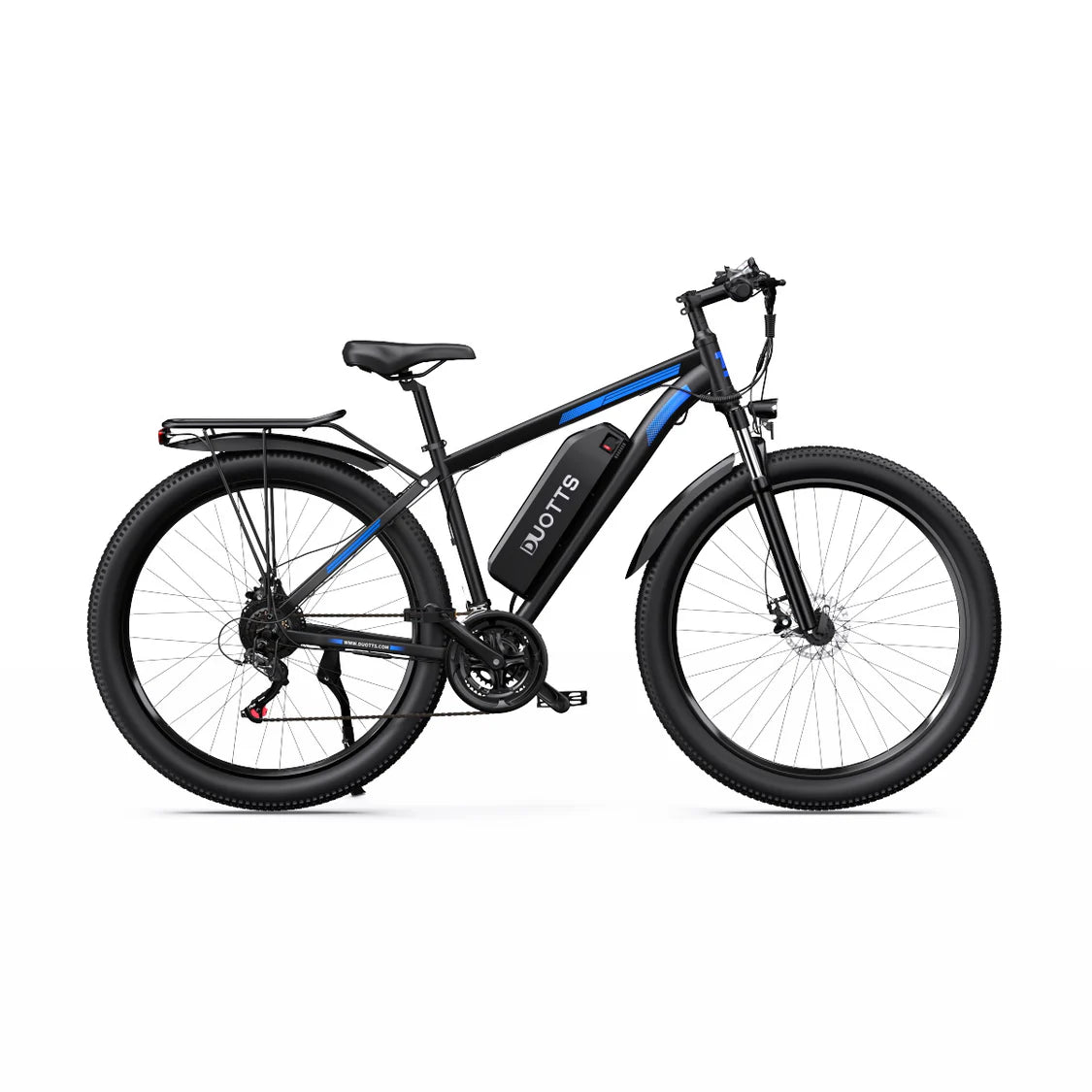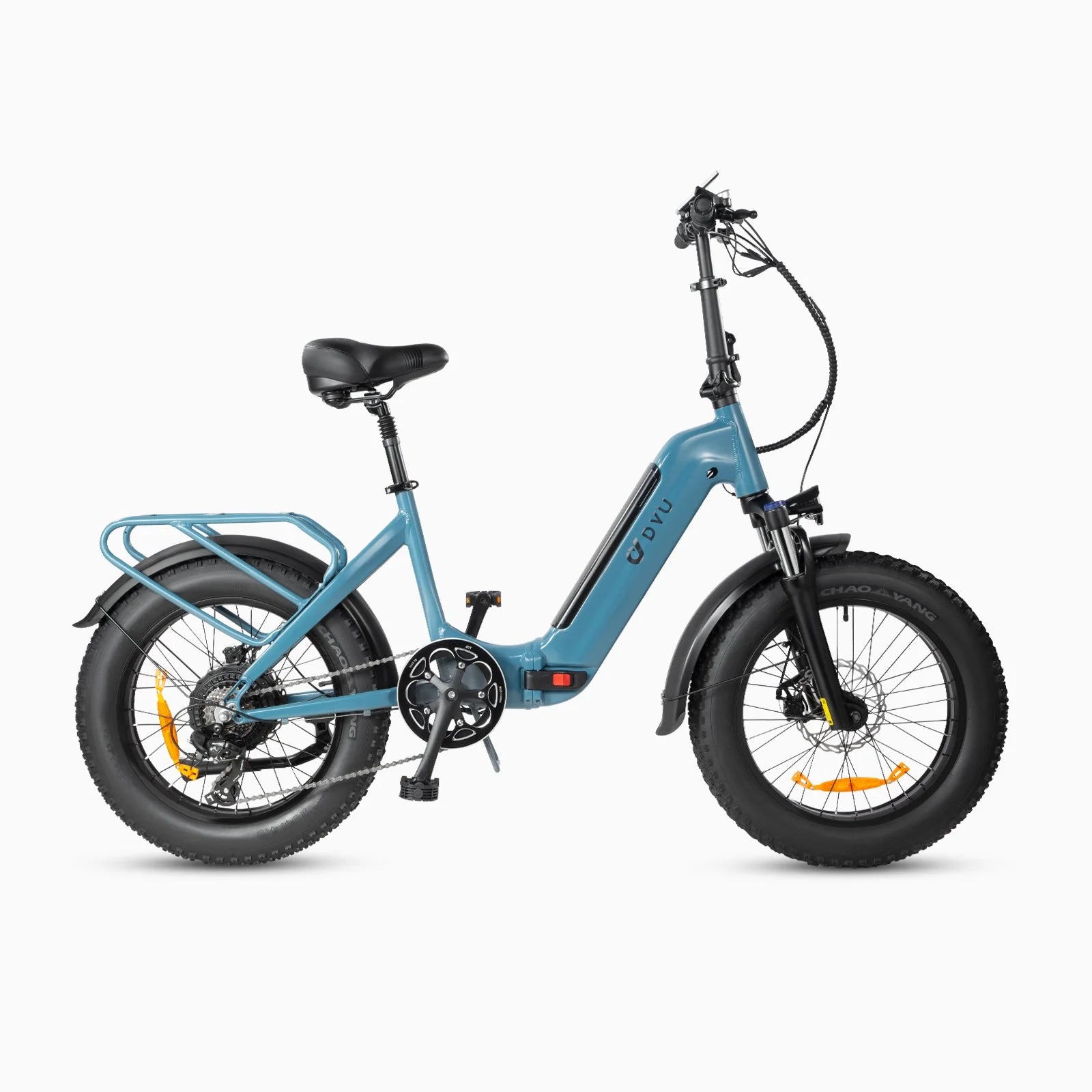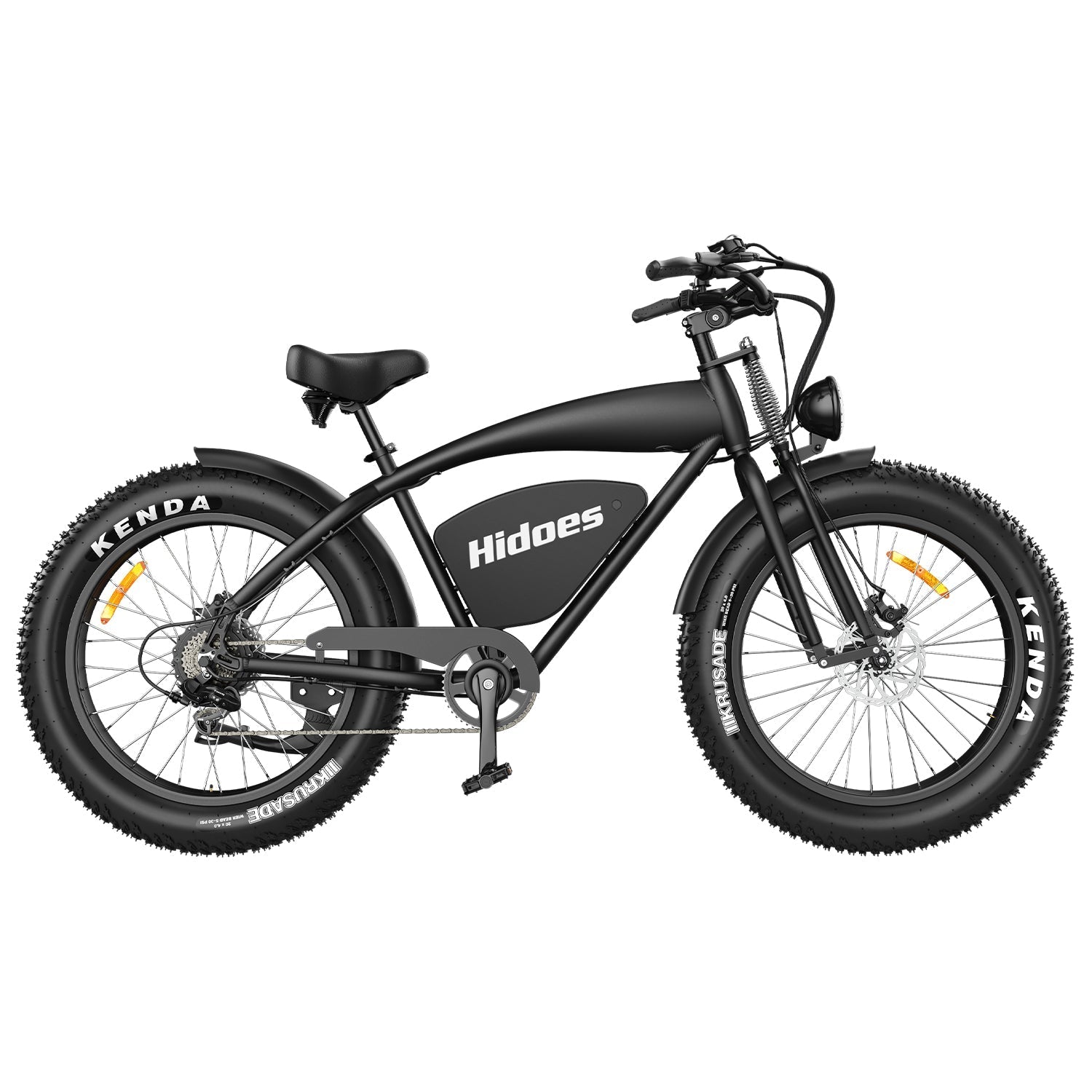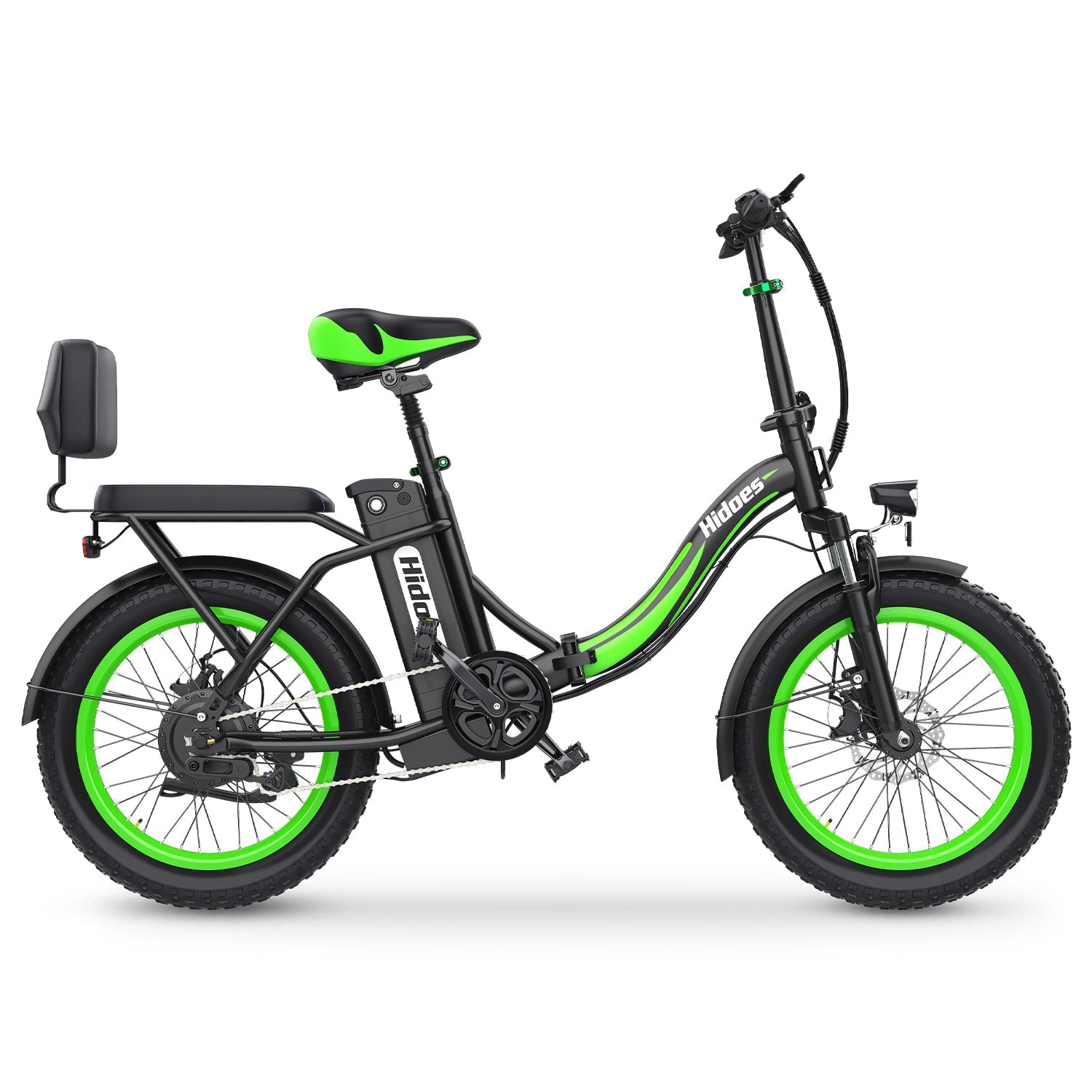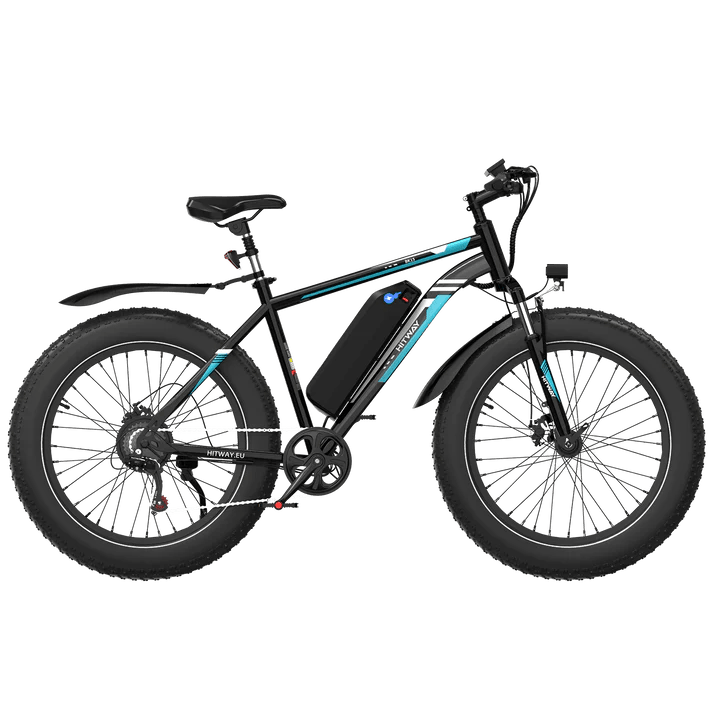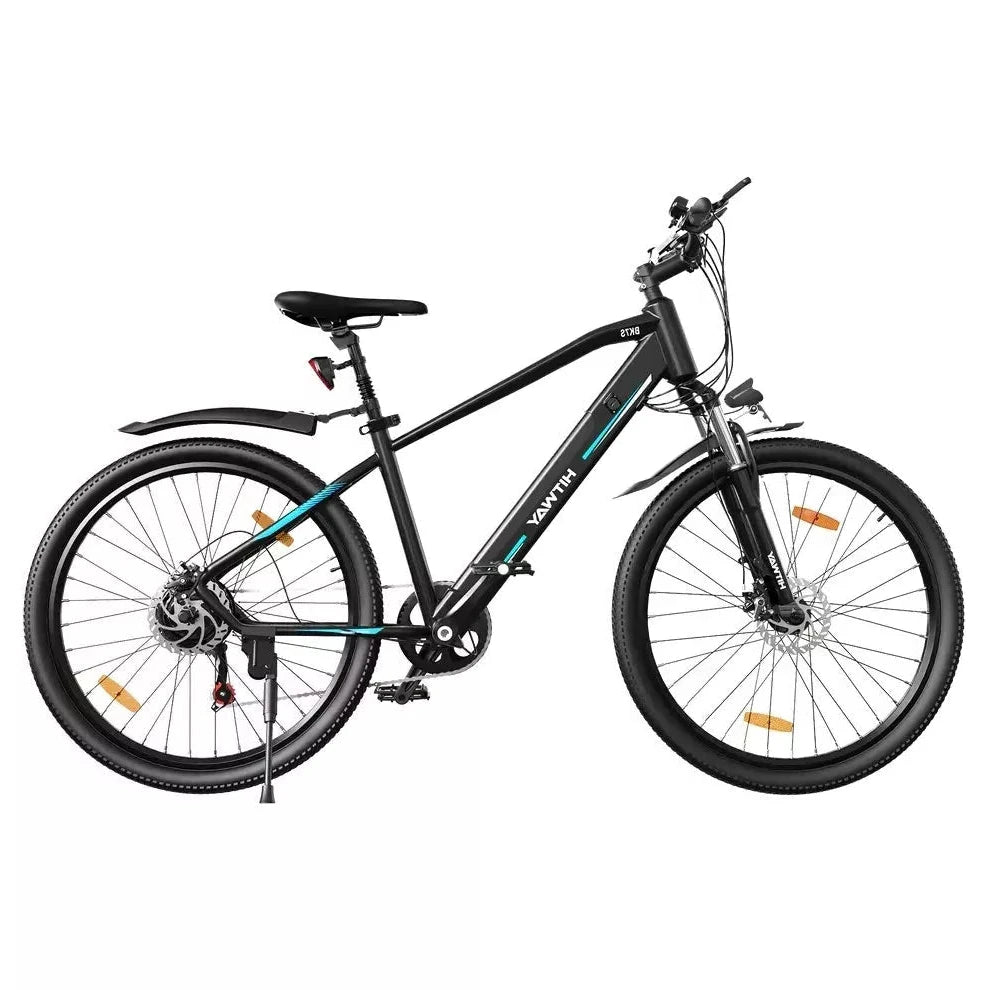Introduction: Why eBikes Matter More Than Ever
The electric bike revolution is well underway, and here in the UK, more riders than ever are turning to eBikes for commuting, adventure, and everyday journeys. Whether it’s beating the traffic on a Monday morning, exploring scenic country lanes, or carrying the weekly shop, eBikes are proving themselves as practical, efficient, and enjoyable alternatives to cars and public transport.
At TrailSurge.co.uk, we believe choosing the right eBike is about more than looks or specs—it’s about finding a bike that fits your lifestyle. That’s why we offer a diverse range of models: commuter eBikes, mountain eBikes, fat tyre eBikes, folding eBikes, and cargo eBikes. Each type serves a different purpose, and each comes with its own strengths, quirks, and maintenance needs.
But buying the right eBike is only half the journey. To get the most out of your investment, you’ll need to understand how to look after it. That means knowing how to care for your battery, maintain your tyres, secure your bike with the right locks, and adapt your riding habits for winter conditions.
This guide brings it all together. We’ll break down the five main types of eBikes we offer, explain who they’re best for, and give you practical maintenance advice for each. By the time you’re done reading, you’ll know exactly which bike type suits your lifestyle and how to keep it running smoothly for years to come.
1. Commuter eBikes: Effortless Daily Rides
For many riders, the eBike journey begins with the commuter eBike. These bikes are designed to make daily travel smoother, quicker, and less stressful. If you’re tired of sitting in traffic or paying eye-watering train fares, a commuter eBike could be the perfect solution.
1.1 What Makes a Commuter eBike Different?
Commuter eBikes are built with city riding in mind. Unlike heavy mountain bikes or bulky cargo bikes, they strike a balance between speed, efficiency, and comfort. Key features often include:
-
Lightweight frames for easy handling in busy streets.
-
Slimmer tyres with a semi-slick tread, optimised for tarmac and cycle paths.
-
Practical accessories like racks, pannier mounts, mudguards, and built-in lights.
-
Upright riding position, making it comfortable to see over traffic and ride in regular clothes.
-
Mid-sized batteries, often giving ranges of 30–60 miles depending on terrain and assistance level.
In short, commuter eBikes are the two-wheeled equivalent of a smart city car—efficient, practical, and easy to live with.
1.2 Why Choose a Commuter eBike?
If your primary riding involves getting from point A to B with minimal fuss, a commuter eBike is the most logical choice. Here’s why:
-
Time savings: Bypass traffic jams, ride straight to your destination, and avoid parking headaches.
-
Cost savings: Ditch the petrol and train tickets. Charging an eBike battery costs pennies.
-
Health boost: You still pedal, so you’re exercising—but the motor smooths out the effort.
-
Eco-friendly: A greener alternative to short car trips, with zero tailpipe emissions.
Many riders find they arrive at work fresher, less sweaty, and less stressed compared to riding a standard bike.
1.3 Maintenance Tips for Commuter eBikes
City riding may seem gentle compared to mountain trails, but urban environments present their own challenges. Potholes, rain, stop-start traffic, and opportunistic thieves all put your bike to the test. Here’s how to keep your commuter eBike in top shape:
Battery Care
-
Top-up charging works best: Since commuter trips are often short, don’t wait until the battery is flat. Charge little and often to keep it healthy.
-
Indoor storage: Always bring the battery inside during winter—cold weather reduces range.
-
Avoid long-term full charge: If you don’t commute for a while, store the battery at around 50–60% charge.
Tyres
-
Higher pressures are your friend: Urban tyres typically run between 40–65 psi. Keeping them topped up prevents pinch flats from potholes and improves efficiency.
-
Puncture protection matters: Commuter tyres often come with reinforced layers. If not, consider upgrading—city debris like glass and nails are common culprits.
-
Regular checks: Worn or smooth tyres increase puncture risk and braking distance on wet roads. Replace when tread gets low.
Locks & Security
-
Invest in a Sold Secure Gold lock: London and other UK cities have high theft rates. A strong U-lock or heavy-duty chain is essential.
-
Lock smart: Always secure the frame, not just a wheel, to a fixed object in a visible, well-lit spot.
-
Double up: Use a secondary cable or D-lock for added deterrence.
Winter Riding
-
Clean salt off daily: Road grit and salt corrode metal parts fast. A quick rinse and dry after a commute keeps rust at bay.
-
Lube the chain often: Wet conditions wash lubricant away quickly, so apply a fresh coat every week in winter.
-
Brake checks: Rim brakes suffer most in the wet, while disc brakes can pick up grit. Clean pads and rotors regularly.
1.4 Who Is the Commuter eBike Best For?
-
Urban professionals tired of train delays or car queues.
-
Students needing affordable transport to and from campus.
-
Casual city riders who want a comfortable, reliable way to get around without a car.
-
Anyone commuting under 20 miles round-trip who wants to cut costs and boost convenience.
Commuter eBikes are often the first step into the electric world, and for good reason: they’re versatile, cost-effective, and transform the daily grind into something enjoyable.
2. Mountain eBikes (eMTBs): Conquer the Trails
For riders who want more than flat roads and cycle paths, mountain eBikes (eMTBs) open up a whole new world. Imagine riding through rugged trails, powering up steep climbs, and tackling descents with confidence—all with a little electric boost when you need it. That’s the promise of a mountain eBike.
2.1 What Makes a Mountain eBike Different?
While commuter bikes are built for smooth efficiency, eMTBs are designed to withstand punishment from roots, rocks, and uneven terrain. Their design focuses on strength, grip, and control, often at the expense of lightness.
Key features include:
-
Suspension: Either front suspension (hardtail) or dual suspension (full-sus) for absorbing shocks.
-
Chunky tyres: Wide, knobbly tread for maximum traction on mud, dirt, and gravel.
-
High-torque motors: Often mid-drive systems to give natural power on climbs.
-
Reinforced frames: Built to take the strain of jumps, drops, and rough tracks.
-
Wider handlebars & stronger brakes: For better control on technical descents.
2.2 Why Choose a Mountain eBike?
A mountain eBike isn’t just about fitness or commuting—it’s about fun, freedom, and exploration. Here’s why they stand out:
-
Climbing made easy: Hills that once felt impossible are now achievable.
-
Ride further, faster: The motor support lets you explore trails without exhausting yourself too early.
-
Confidence on technical terrain: Wider tyres, strong brakes, and suspension give better control.
-
Adventure-ready: From forest tracks to rocky paths, you’ll go places a standard road bike can’t dream of.
Many UK riders choose eMTBs for weekend adventures in the Peaks, Wales, or Scottish Highlands. They’re also great for countryside commuters who need to tackle gravel or hilly roads daily.
2.3 Maintenance Tips for Mountain eBikes
Trail riding is tough on equipment. Rocks, mud, and constant gear changes mean more upkeep compared to a commuter bike. Here’s how to keep your eMTB running sweet:
Battery Care
-
Cold weather drain: Batteries lose efficiency in the cold. Keep yours indoors until you ride, and expect a reduced range in winter.
-
Clean connections: Mud and grit can clog connectors. Wipe them after each ride.
-
Plan your rides: Steep climbs chew through power. Start with a full charge if you’re hitting the trails.
Tyres
-
Lower pressure for grip: Unlike commuters, mountain bikes run lower pressures (20–30 psi) for traction on loose ground.
-
Tubeless advantage: Many eMTBs run tubeless systems, which self-seal small punctures. Top up sealant every few months.
-
Regular inspection: Trail debris (flints, thorns) can embed in tyres. Check after each ride.
Locks & Security
-
Trailhead theft risk: eMTBs are expensive and attractive to thieves. Always lock if you’re leaving it on a rack or car.
-
Heavy-duty lock for transport stops: If you’re grabbing food post-ride, secure the frame to something solid.
-
Remove the battery: Many riders take the battery out if leaving the bike unattended.
Winter Riding
-
Mudguards help: Keep grit off the frame, chain, and suspension.
-
Drivetrain care: Mud quickly wears chains and cassettes—clean and lube after every wet ride.
-
Suspension maintenance: Wipe stanchions (the sliding fork/shock parts) after every ride. Check seals regularly.
2.4 Who Is the Mountain eBike Best For?
-
Trail riders who love forest tracks, bridleways, and technical challenges.
-
Weekend adventurers looking for a fitness boost without total exhaustion.
-
Rural commuters dealing with gravel or steep country lanes.
-
Anyone who wants a bike built for strength, not just speed.
If you see your bike as more than just transport—as a ticket to adventure—then a mountain eBike is the one for you. It balances adrenaline with practicality, letting you ride further, climb higher, and smile wider.
3. Fat Tyre eBikes: Stability and Power for Any Terrain
If you’ve ever seen an eBike with tyres wider than your fist, you’ve spotted a fat tyre eBike. These beasts are built to handle terrain that would stop most bikes in their tracks—snow, sand, mud, loose gravel, even wet grass. With oversized tyres and powerful motors, fat tyre eBikes deliver stability, comfort, and confidence like no other category.
3.1 What Makes a Fat Tyre eBike Different?
The clue is in the name: tyres, tyres, tyres. Where standard bikes run 1.5–2.5 inch tyres, fat tyre eBikes often use 4–6 inch monsters. These wide tyres dramatically change how the bike feels and performs.
Key features include:
-
Massive tyres that “float” over soft or unstable ground.
-
Lower pressures (as low as 10 psi) to maximise grip and comfort.
-
Strong motors to push through resistance on snow and sand.
-
Sturdy frames designed to support the extra weight and rolling resistance.
-
Comfortable ride quality—the tyres act like natural suspension.
3.2 Why Choose a Fat Tyre eBike?
Fat tyre eBikes are less about everyday practicality and more about versatility and fun. They let you ride where other bikes can’t.
-
Unstoppable traction: Perfect for off-road exploring, beach rides, or snowy trails.
-
Year-round usability: Rain, frost, mud—fat tyres power through.
-
Comfort: The huge volume of air in the tyres absorbs bumps, making them surprisingly smooth.
-
Confidence for beginners: Many new riders feel more stable thanks to the wide contact patch.
In the UK, fat tyre eBikes are particularly popular among adventurous riders who want to keep cycling even in poor weather. They’re also a favourite for leisure riders who value comfort and stability over speed.
3.3 Maintenance Tips for Fat Tyre eBikes
Fat tyre bikes may look indestructible, but they still need the right care. Here’s how to maintain them properly:
Battery Care
-
Power-hungry rides: Fat tyres create more rolling resistance. Expect slightly shorter ranges than commuter eBikes with the same battery.
-
Cold conditions: Snow riding drains batteries quickly. Always start with a full charge.
-
Remove after rides: Don’t leave the battery exposed to freezing air overnight—bring it indoors.
Tyres
-
Lower pressure, more checks: Running at 10–20 psi means tyres can lose shape if pressure drops too low. Check before every ride.
-
Sand & snow use: Wash rims and tyres after salty winter roads or sandy beaches to prevent corrosion.
-
Heavy-duty tubes or tubeless: Because of the large tyre volume, punctures can be awkward. Many fat tyre riders switch to tubeless setups with sealant.
Locks & Security
-
Wide frame issues: Some locks may not fit around the big tyres and thick frame tubes. Choose a wider U-lock or heavy-duty chain.
-
Storage: Fat tyre bikes are bulkier—indoor storage is best to keep them safe and dry.
Winter Riding
-
The ultimate winter bike: Fat tyres excel in snow and ice, but clean the drivetrain after every salty ride.
-
Brake performance: The added weight means brakes work harder—inspect pads and rotors often.
-
Chain protection: Use a wet lube that resists wash-off in snow and slush.
3.4 Who Is the Fat Tyre eBike Best For?
-
Adventure seekers who want to ride on sand, snow, or muddy trails.
-
Leisure riders looking for maximum comfort and stability.
-
Winter riders who don’t want bad weather to stop them.
-
Heavier riders who benefit from the extra tyre support and stability.
While they aren’t the fastest on the road, fat tyre eBikes are about confidence and freedom. They make cycling possible in places—and conditions—where it normally isn’t.
4. Folding eBikes: Compact Power and Everyday Convenience
Not everyone has the space for a full-sized eBike. If you live in a flat, commute on trains, or need a bike that fits easily into the boot of a car, a folding eBike could be your perfect match. These bikes are designed to be practical and portable, without sacrificing the benefits of electric assistance.
4.1 What Makes a Folding eBike Different?
The standout feature of a folding eBike is, of course, its hinged frame and collapsible components. In just a few seconds, the bike folds down into a compact size, making it easy to carry or store.
Key features include:
-
Folding frame with secure hinges and quick-release mechanisms.
-
Small wheels (often 16–20 inches) for compactness and agility.
-
Lightweight design compared to cargo or mountain eBikes.
-
Removable batteries that can be charged separately indoors.
-
Portable size when folded, perfect for flats, offices, or trains.
4.2 Why Choose a Folding eBike?
Folding eBikes aren’t just a niche product—they solve real problems for modern riders.
-
Perfect for multi-modal commuting: Ride to the station, fold, hop on the train, unfold at the other end.
-
Easy storage: Ideal if you live in a flat or house without secure outdoor storage.
-
Car-friendly: Fold it into the boot for weekend getaways.
-
Theft reduction: Since they fold, many owners simply bring them indoors instead of locking them outside.
-
Surprisingly capable: Despite smaller wheels, the motor ensures you don’t lose out on speed or climbing power.
4.3 Maintenance Tips for Folding eBikes
While convenient, folding bikes need particular attention to hinges, cables, and small wheels.
Battery Care
-
Remove before folding: If possible, take the battery out before collapsing the frame—this avoids knocks and strain.
-
Indoor charging: Small batteries are lighter, making it easy to bring them inside. Charge at room temperature.
-
Check contacts: Folding can sometimes loosen connectors—inspect regularly.
Tyres
-
Higher pressure required: Smaller wheels mean higher pressures (50–70 psi) to avoid pinch flats.
-
Inspect more often: Small wheels hit potholes harder, so check for cracks or damage weekly.
-
Consider puncture-resistant tyres: City streets with glass and debris are especially tough on smaller tyres.
Locks & Security
-
Bring it inside: The biggest security advantage of folding bikes is you rarely need to leave them outside.
-
Compact lock for emergencies: Carry a lightweight lock for quick stops, but avoid long-term outdoor storage.
-
Office-friendly: Most folded eBikes fit under desks or in cupboards.
Winter Riding
-
Hinges need care: Salt and grit can get into folding joints. Clean and lightly lubricate hinges regularly.
-
Chain lubrication: Folding bikes often have exposed drivetrains—keep the chain lubed to prevent rust.
-
Visibility: With smaller frames, add reflective strips or bright lights to stay visible in traffic.
4.4 Who Is the Folding eBike Best For?
-
Commuters who use trains, buses, or need to combine cycling with other transport.
-
Urban dwellers with limited storage space.
-
Students who want a practical, portable solution for city living.
-
Weekend riders who want a bike that fits easily into the boot of a car.
Folding eBikes combine the freedom of cycling with the convenience of portability. For many UK riders, they’re not just an alternative—they’re the most logical choice.
5. Cargo eBikes: The Workhorses of the eBike World
If commuter bikes are the nimble runarounds and mountain bikes are the thrill seekers, then cargo eBikes are the workhorses. Built to carry shopping, tools, children, or even deliveries, these bikes are transforming how people transport goods in towns and cities across the UK.
5.1 What Makes a Cargo eBike Different?
Cargo eBikes are engineered for stability and strength, often featuring:
-
Extended frames or long-tail designs with space for panniers, boxes, or seating.
-
Heavy-duty racks rated for loads of 40kg or more.
-
High-torque motors to move heavy cargo with ease.
-
Reinforced wheels and tyres to handle the extra weight.
-
Optional dual batteries for extended range under load.
Where a standard eBike helps you move yourself, a cargo eBike helps you move your world.
5.2 Why Choose a Cargo eBike?
Cargo eBikes are rising fast in popularity, particularly among families and urban businesses. Here’s why:
-
Family transport: Safely carry children with dedicated seats or long-tail setups.
-
Car replacement: Perfect for grocery runs, school drop-offs, and errands.
-
Business use: Couriers, tradespeople, and delivery services are adopting them.
-
Eco-friendly logistics: Replace short van trips with pedal power.
-
Stability under load: Built to remain steady even when fully packed.
For many urban households, a cargo eBike can genuinely replace a second car.
5.3 Maintenance Tips for Cargo eBikes
Hauling heavy loads puts unique demands on a cargo eBike. Here’s how to maintain it:
Battery Care
-
Load = drain: Carrying children, shopping, or parcels uses more motor power. Expect reduced range under heavy load.
-
Dual battery advantage: Some cargo models allow two batteries—ideal if you’re covering long distances.
-
Smart charging: If used daily, charge frequently to avoid deep discharge.
Tyres
-
Higher pressures required: Prevent pinch flats by inflating to the higher end of the range.
-
Puncture-resistant tyres are essential: A flat under load is both dangerous and inconvenient.
-
Regular inspections: Heavy loads accelerate wear—check weekly.
Locks & Security
-
High-value target: Cargo eBikes cost more and stand out—always double lock.
-
Insurance recommended: Especially if using for business.
-
Remove accessories: Child seats, bags, and cargo boxes are tempting theft targets.
Winter Riding
-
Brakes under stress: Heavier loads mean longer stopping distances. Inspect pads and rotors more often.
-
Frame protection: Clean and dry after wet rides—extra weight makes rust and corrosion spread faster.
-
Visibility: Cargo bikes are larger—fit strong front and rear lights so you remain visible in traffic.
5.4 Who Is the Cargo eBike Best For?
-
Families replacing short car trips for school runs and shopping.
-
Urban businesses making local deliveries.
-
Eco-conscious riders who want to reduce reliance on cars.
-
Anyone who wants practicality first and foremost.
Cargo eBikes are less about sport and more about serious utility. They prove that eBikes aren’t just toys—they’re tools that can reshape how we live and work.
6. Universal eBike Maintenance: The Golden Rules
No matter which eBike you choose—commuter, mountain, fat tyre, folding, or cargo—some principles apply across the board. These are the universal rules of eBike care:
-
Battery Care is King
-
Avoid full discharges.
-
Store at 50–60% if unused for weeks.
-
Keep indoors in winter and out of direct sun in summer.
-
-
Tyres Are Your Contact Point
-
Check pressure before every ride.
-
Use puncture-resistant options if riding in debris-heavy areas.
-
Replace tyres when tread wears thin.
-
-
Locks Protect Your Investment
-
A cheap lock equals a stolen bike. Always invest in a Sold Secure Gold standard lock.
-
Double lock in high-risk areas.
-
Register your eBike’s serial number and consider insurance.
-
-
Winter Riding Means Extra Care
-
Salt corrodes—always rinse and dry after wet commutes.
-
Chains need frequent lubrication.
-
Brake performance should be checked twice as often in winter.
-
-
Routine Checks Prevent Problems
-
Weekly: tyres, brakes, and battery.
-
Monthly: chain lubrication, bolt tightening, and drivetrain cleaning.
-
Every 6 months: a professional service for peace of mind.
-
7. Conclusion: Choosing the Right eBike for Your Life
At TrailSurge.co.uk, we’re passionate about helping riders find their perfect eBike. Whether you want the daily convenience of a commuter bike, the thrill of a mountain bike, the all-weather versatility of a fat tyre bike, the compact practicality of a folding bike, or the hauling power of a cargo bike, we have an option for you.
Choosing an eBike isn’t just about the specs—it’s about how you live. A commuter in London has different needs from a mountain adventurer in Wales or a parent in Manchester running school drop-offs. The right eBike fits into your lifestyle seamlessly.
And once you’ve found that match, maintenance keeps it running for years to come. With the right care—charging your battery correctly, checking your tyres, investing in a strong lock, and preparing for winter—you’ll enjoy thousands of miles of reliable, enjoyable cycling.
eBikes aren’t just a trend. They’re the future of transport, recreation, and even family life. And with the range at TrailSurge, there’s never been a better time to find yours.

